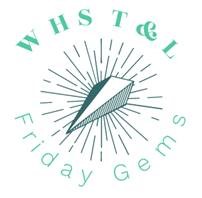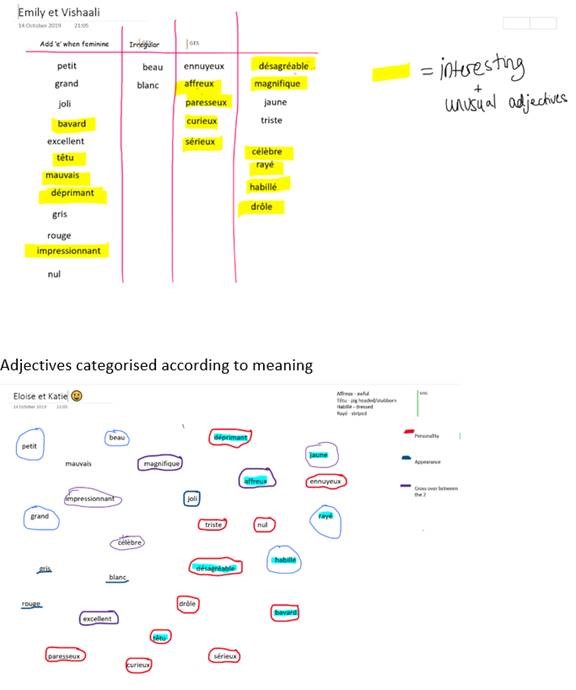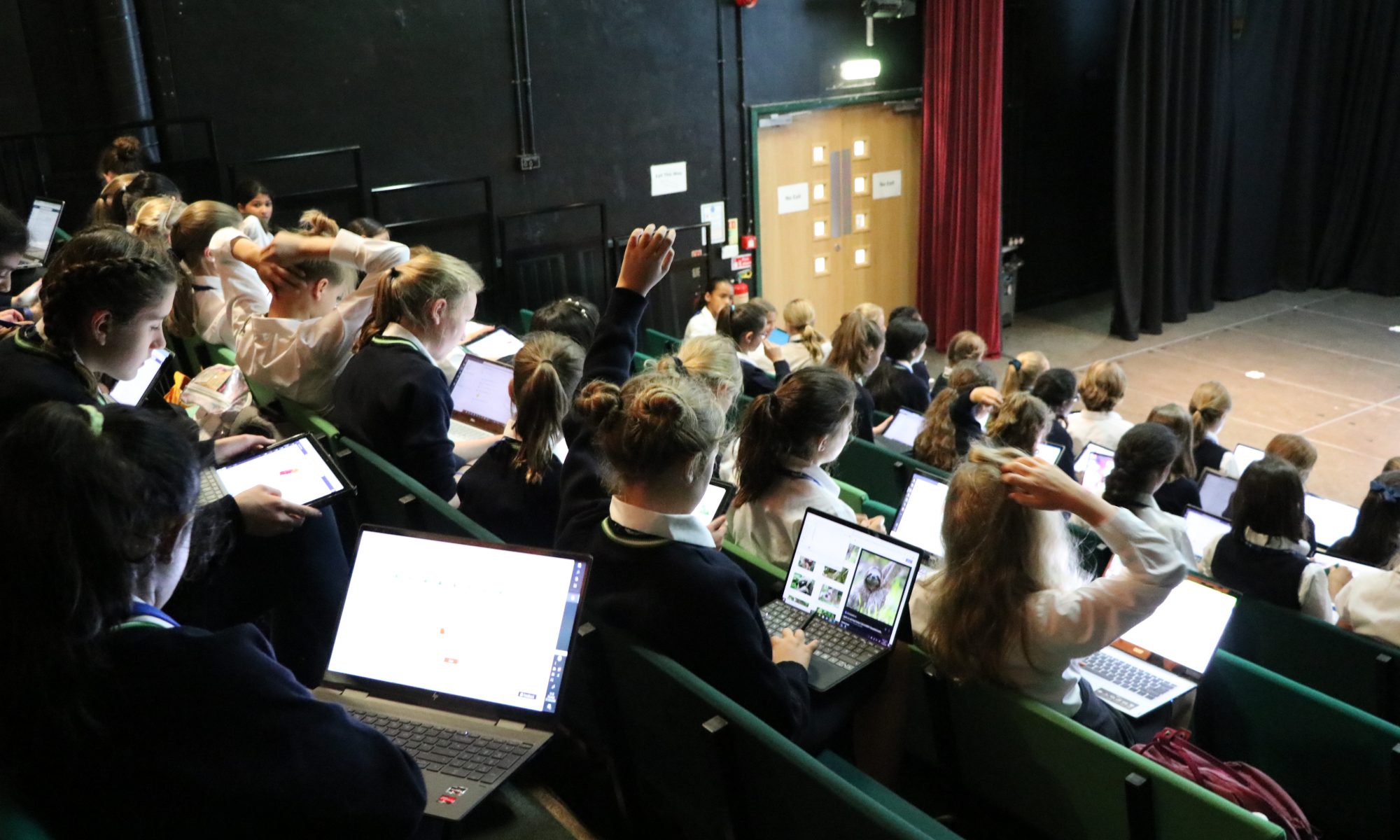This idea comes from Claire Baty, who I saw use it in her Year 10 French lesson. However, I think it can be easily adapted to suit lots of different subjects.

What did she do?
- For each pair of pupils, she set up a collaboration page on OneNote full of adjectives. Some adjectives were familiar, and some were new.
- The instruction was for pupils to drag the words around the collaboration space and to group them “in any way they find interesting’.
- She didn’t define what she meant by ‘interesting’, giving pairs the freedom to think independently, creatively and logically.
- Pairs were immediately deep in debate as to first, what categories to use, and then how to categorise the individual words…some were not easily categorised!
- There were lots of different interpretations of ‘interesting’: some pupils took a grammatical approach (grouping words by how they are used in a sentence); some a semantic approach (grouping words by their meaning); some a metacognitive approach (grouping words with whether they were new or difficult)…and some did something more personal and quirky! (see a couple of screenshots of this below)
- She then showed the collaboration spaces to the class, with pairs explaining their approach.
Of course, you don’t have to be grouping adjectives. You could ask pupils to group anything, BUT it works best where there can be debate and flexibility about how and what to group.
This is effective because…
- The task allowed for natural differentiation, with pairs choosing to group words in more complex or simpler ways (for a great article about differentiation by task rather than activity, read this https://learningspy.co.uk/english-gcse/building-challenge-differentiation-thats-quick-and-works/ )
- It opened up rigorous, independent debate between pupils as they weighed up why words should be grouped in a certain way.
- It recapped prior learning and allowed for independent exploration of new words (and the way they work within sentences).
- It modelled a way to revise vocabulary – by grouping vocab in different ways to make networks/schemas of words and ideas. This is great for memory recall.


